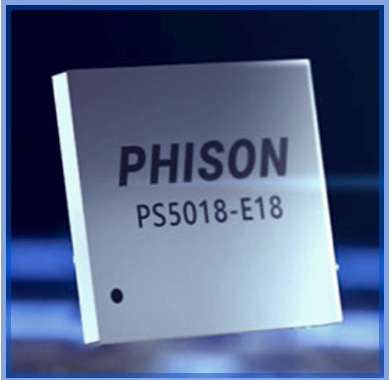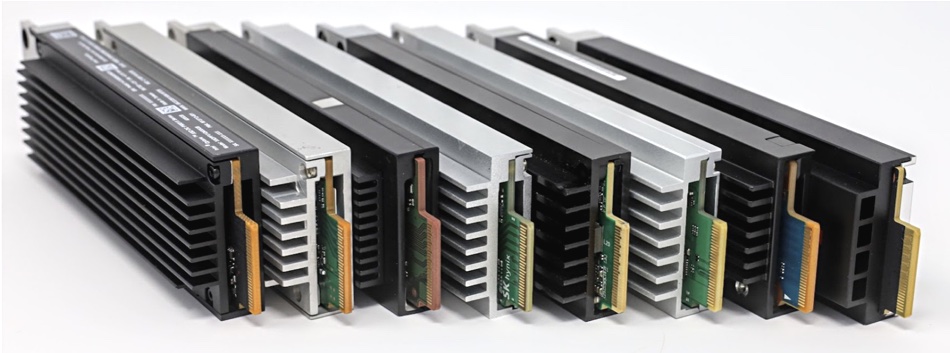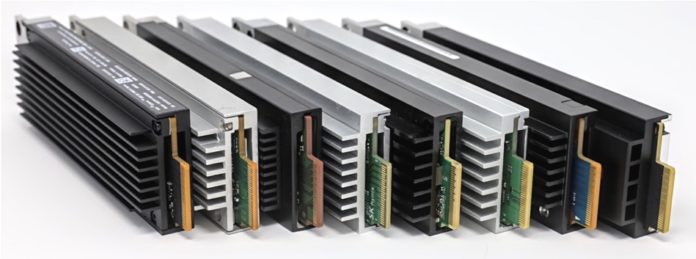SSD controller firm Phison says that as capacities and speeds rise, SSDs will need more cooling as they’ll be running hotter and hotter.
This affects M.2 SSDs particularly as they have a smaller surface area and capacities are rising fast. Micron has 3TB and 4TB M.2 drives while NGD, for example, is shipping an 8TB drive in this gumstick-sized format.
The drives tend to get more separate banks of NAND, meaning access channels and power feeds. Their bandwidth is rising too. PCIe 3 drives speed along in the 1GB/sec to 2.5GB/sec range while PCIe 4 drives can run at the 3GB/sec to 5GB/sec bandwidth levels. PCIe 5 drives will deliver 6GB/sec or more. A FADU Echo E1.S drive puts out a near-ridiculously high 14.6GB/sec when sequentially reading.
Overheated drives will have their performance throttled until they cool down. This is better than the drives burning up, but not good when customers want performance consistency.

Phison says it’s shrinking the semiconductor process size for its controllers, “going down from 16 nanometers to seven. Smaller process nodes can operate at higher frequencies with lower voltage. Also, less energy is needed to toggle the transistors, which in turn lowers the power used. Using less power means the SSD generates less heat.”
The number of NAND channels can be lowered as the internal ONFI bus, which moves data from the NAND to the controller, is getting wider. Phison CTO Sebastien Jean said: “In practical terms, you no longer need eight channels to saturate the Gen4 and even Gen5 PCIe interface. You can potentially saturate the host interface with four NAND channels, and reducing the number of back-end channels reduces the total SSD power by typically 20 to 30 percent.”
Drive builders have previously relied on things like metal screws to fasten M.2 drives to motherboards, and also the M.2 connectors that plug into a motherboard, to conduct heat away from the drive. But heat sinks are now being used – either radiant flat plates or ones with channels for fan-blown air to pass through and take heat away from the drive. The new EDSFF drive formats have specific design attributes for heat management as they have been created for a world of denser, higher-capacity drives.

As we move on from PCIe 4-connected drivers to the twice-as-fast PCIe 5, and then on to PCIe 6, it’s likely we will see active cooling appear on drives. Jean said: “I would expect to see heatsinks for gen 5, but eventually we’ll need to have a fan that’s pushing air right over the heatsink, too.”
The need for this may be avoided by having better drive-to-motherboard connectors that are much more efficient at conducting heat away from the drives. Then the driver server enclosure’s own fan-blown air can take the heat away and out of the box.
High-capacity, high-bandwidth SSDs will run hot and their thermal management will become more important to avoid performance being throttled. Controller suppliers like Phison can only do so much to help, with the main responsibility lying at the door of standards bodies and drive and system designers.








